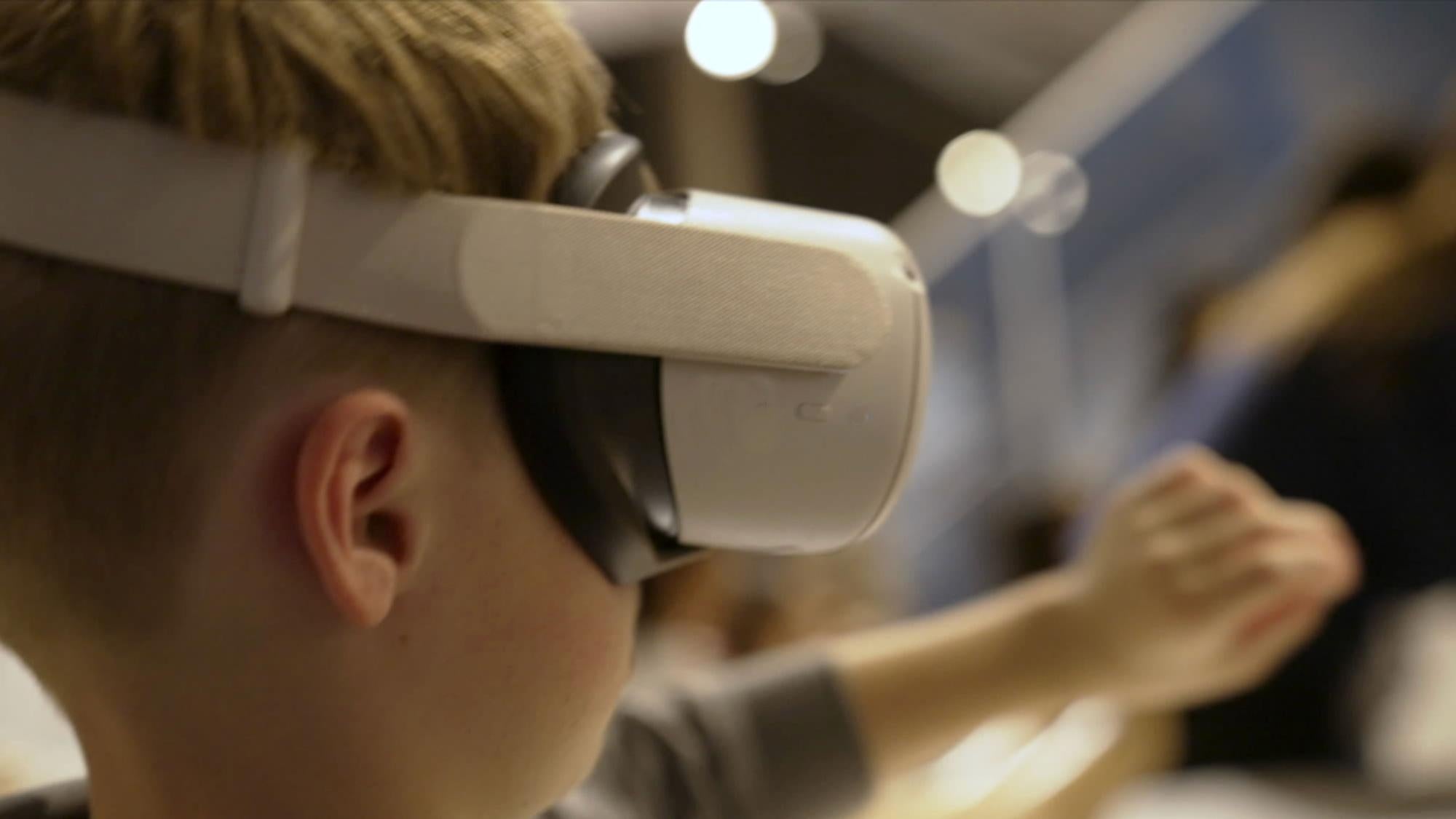The little boy, about 7 years old, almost disappeared inside the virtual reality headset, yet the way he was holding up his hands showed he knew exactly what to do. A laptop screen showed what he was seeing: digital outlines of hands manipulating Tetris-like blocks. A hand turned a block to make it fit, then picked up another.
On President’s Day at the Museum of Science and Curiosity, or MOSAC, in Sacramento, Valerie Klein, a UC Davis undergraduate research assistant, explained to the boy’s parents the purpose of the study, which is to understand how children learn in virtual environments.
“I’ve always enjoyed learning new things and being able to teach them to people,” Klein said later. She is majoring in neurobiology, physiology and behavior, with plans to become a psychiatrist. “Seeing that moment when it clicks in your head, for me that’s the best thing ever.”
Everything about the study with kids at MOSAC is unique, from its research questions to its data collection that took place during three busy holiday weekends. In many ways, the two undergraduate researchers are making it all possible.
“I think sometimes people forget that research is not just running the experiment,” said Allyson Snyder, a Ph.D. candidate in communication who leads the research. “There are so many extra steps involved. On a day of activity like this, our research assistants are coordinating the chaos.”
The role of undergraduate research in study on VR learning
On President’s Day, the MOSAC doors opened at 10 a.m., and within an hour the first floor was full of the clack of wooden blocks, the shouts of children and stomps across the carpet. The research team had set up beside the cavernous tube of an MRI machine that had nothing to do with their study but that piqued curiosity about that corner of the floor.
In this experiment, children would first put on VR headsets and try to solve the puzzles virtually. Then they would take off the headsets to try to solve them with real blocks. Snyder and project co-lead Camren Allen, also a Ph.D. candidate in communication, would offer encouragement through the challenging puzzles, reminding children that they could always try them again later.
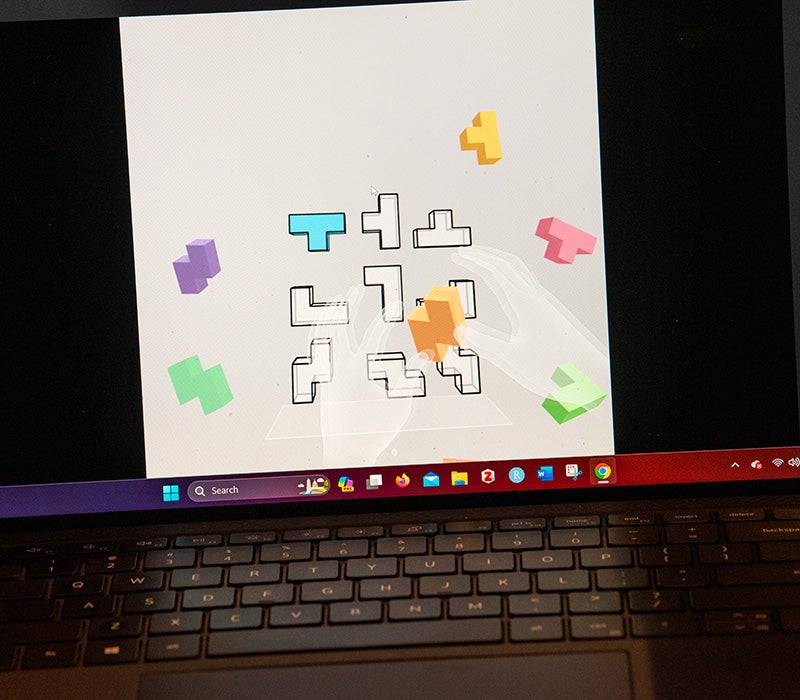
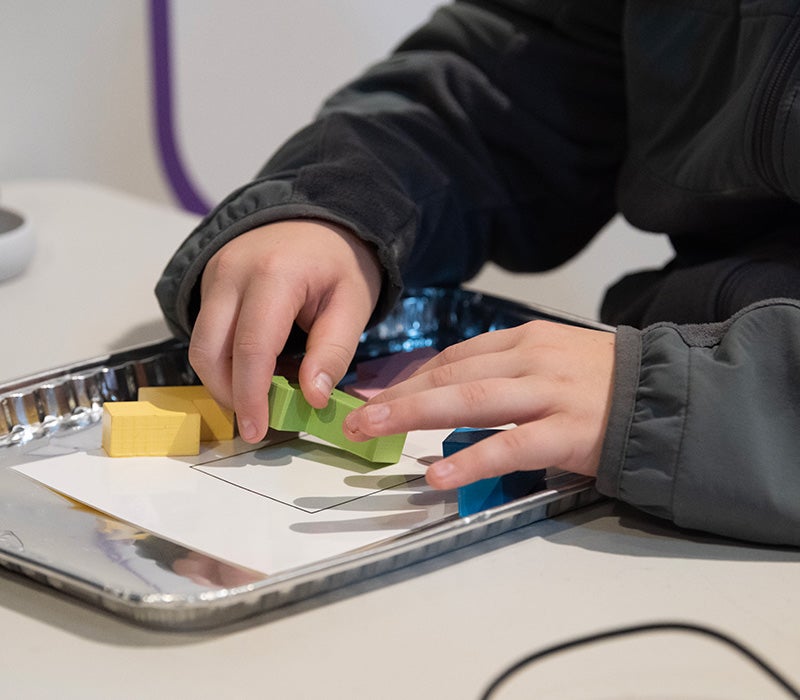
Before the study’s first participant got started that day, Klein and fellow undergraduate research assistant Nicole James organized aluminum trays with puzzles of the physical blocks. With those trays stacked and ready, they turned to each other to discuss how to manage the flood of kids hoping to give the experiment a try.
Both Klein and James take part in a UC Davis program that gives undergraduates unique research opportunities. Accelerating Success by Providing Intensive Research Experience, or ASPIRE, offers students hands-on experience with state-of-the-art research in the mind and brain sciences.
“In high school we had no access to this kind of research experience,” said James, a psychology major and pre-med student. “The only research was all pipettes and chemistry, not psychology.”
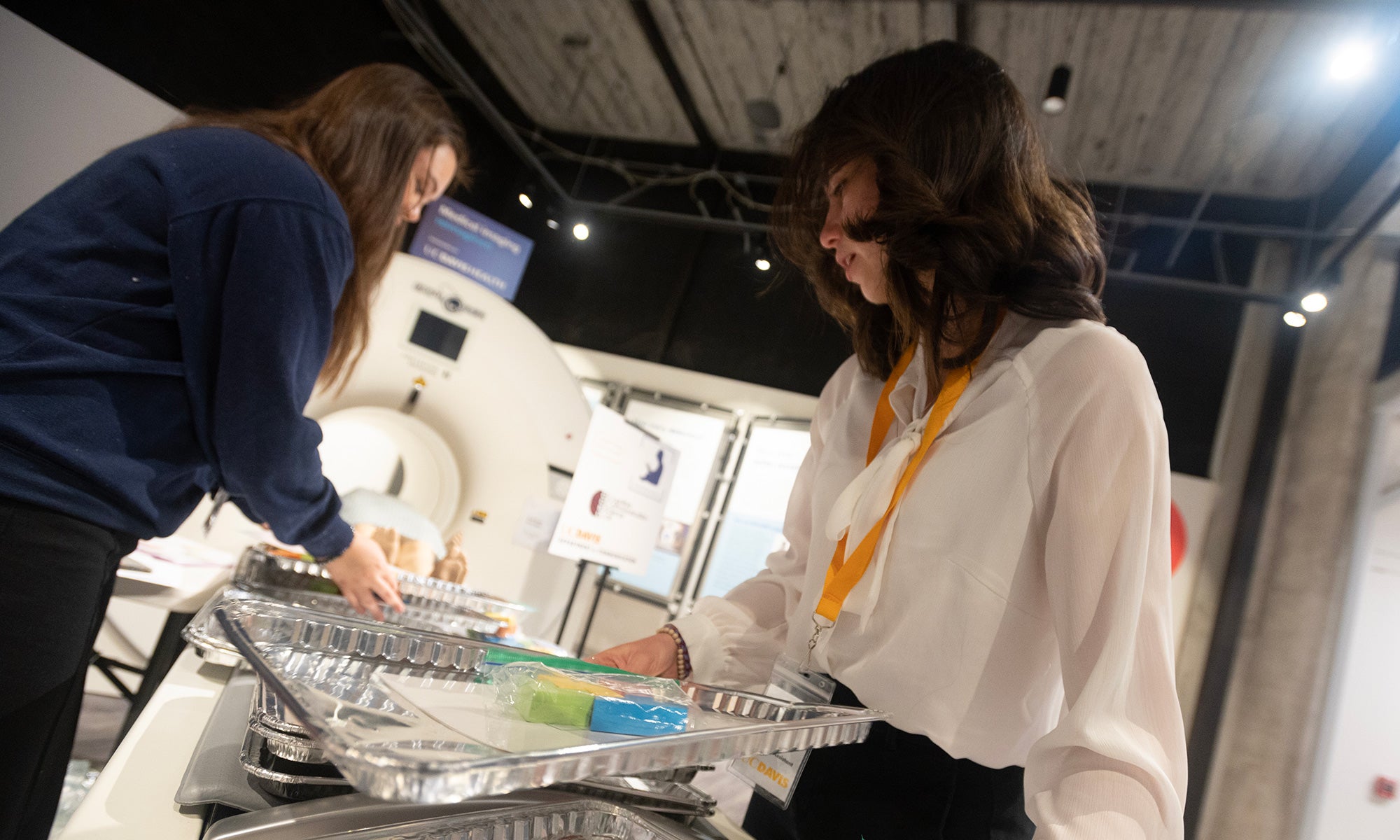
Integrating research and teaching
For Richard Huskey, an associate professor of communication, that day was the first time he had seen how the data was collected. He leads the Cognitive Communication Science Lab at UC Davis. He is also a close collaborator on this project with Drew Cingel, an associate professor of communication who leads the Human Development and Media Lab that oversees this study.
“We’re a research university, and when the research integrates with the teaching mission, that’s when we get the best opportunities,” said Huskey.
He has mentored Klein since she first joined his lab two years ago. Her first job was a different study that also used a virtual reality game.
“I didn’t really understand what we were testing or what the research question was,” said Klein. “It was mainly, set these participants up, collect the data and give it back to us.”
Since then, said Huskey, Klein has come a long way. During this study at MOSAC she and James are making real contributions to how the team collects data. He is also counting on her to help plan data collection for a new study he’s designing right now.
“She started off like any other student who needs a ton of training, and today she’s someone who has a lot of autonomy, someone who is a research partner,” said Huskey.
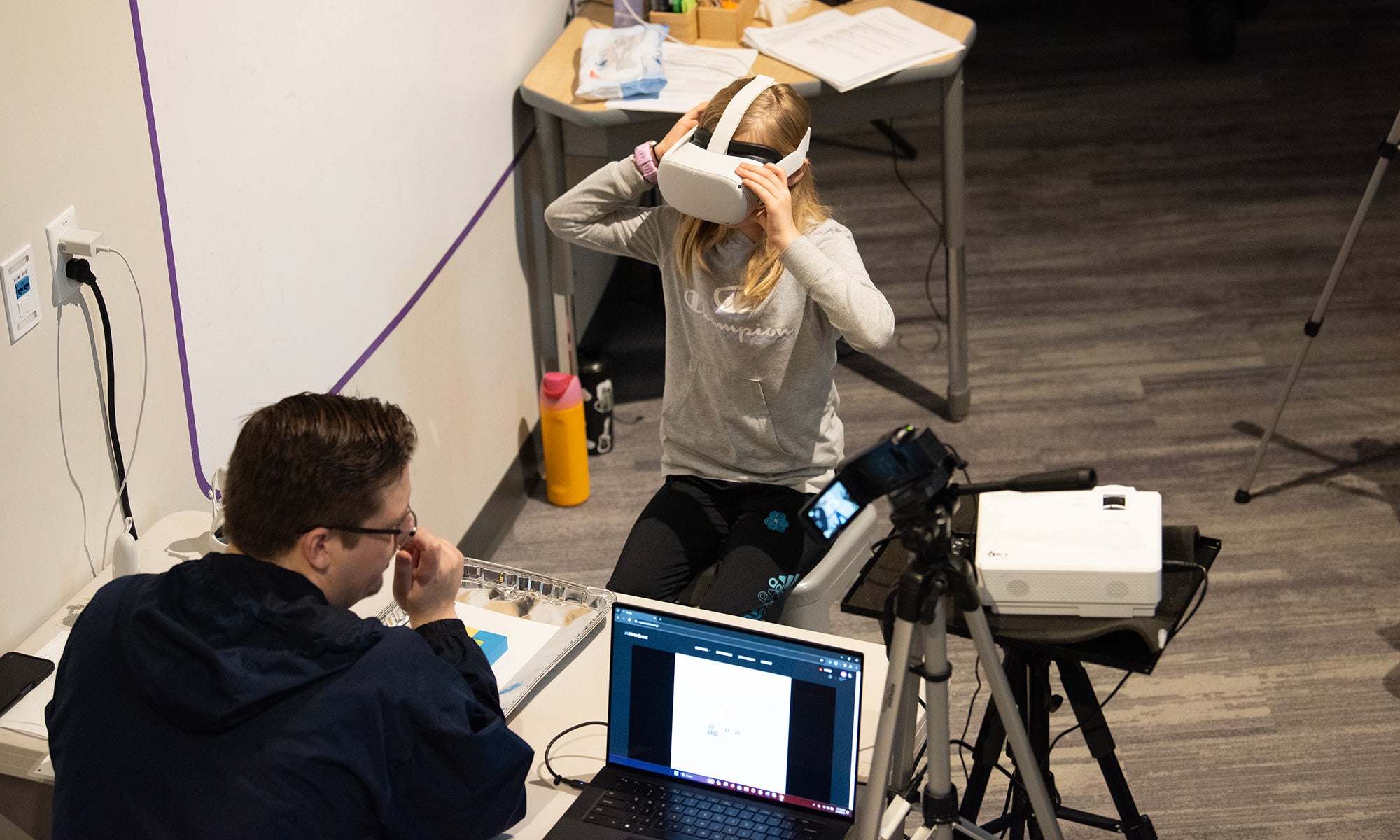
The power of hands-on VR research experience
The puzzles are challenging. One boy in the youngest group (ages 7-8) struggled to manipulate the virtual blocks in the VR headset, while his older brother, who was in the oldest age group (ages 11-12), struggled with the physical blocks.
But neither of the brothers gave up, and this persistence was common across all three weekends. Every kid left with a sticker that said, “Junior Scientist.”
“One kid told us, ‘I’m going to work really hard to make sure that ‘junior’ goes away,’” Allen said. “He really left the experience feeling like a scientist.”
That feeling is one reason Snyder originally asked MOSAC to host the study. She had already volunteered there as a science communicator and knew the value of making science fun for kids.
“We’re thrilled to open up the space for scientists and our guests to connect in this way,” said Natalie Rhoades, exhibits manager at MOSAC. “MOSAC and UC Davis have created an accessible space for guests of all ages and backgrounds to actively engage with the scientific process, personally connect with scientists and be inspired to continue exploring STEAM topics.”
President’s Day marked the final weekend of data collection. Snyder has tasked Klein and James with managing data input and storage, so everything is ready to be coded for analysis in the coming months.
“I’m pretty hands off in this process, and it’s because I just trust them,” said Snyder. “They are going to come up with a system that makes sense for all of us, and they’re already inputting data faster than I can imagine.”
Media Resources
Media Contacts:
- Karen Nikos-Rose, UC Davis News and Media Relations, 530-219-5472, kmnikos@ucdavis.edu
- Alex Russell, UC Davis College of Letters and Science, 530-752-8585, parussell@ucdavis.edu
Press kit of downloadable images.
